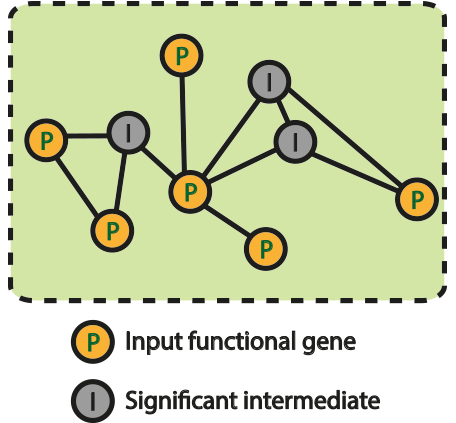
If you want to identify new candidate genes for a function/pathway/phenotype, you can start search by submitting a set of known genes for the function/pathway/phenotype. These submitted genes are used as 'guide genes' for candidate gene prioritization. This page collects closely connected genes to the guide genes on SoyNet by direct neighborhood and list the prioritized genes by total edge weight score (sum of log likelihood score) to the guide gene set. Highly ranked genes are good candidates for new members of a function/pathway/phenotype of interest.

This option allows to use differentially expressed genes (DEGs) as input genes for gene prioritization. For example, crop stress response is regulated by many genes. Genome-wide expression profiling upon stress condition may elucidate some stress response regulators (SRR) by DEGs. However, many of DEGs are simply effector genes, which are regulated by actual SRR. In addition, many SRR do not change their expression levels at the stress condition. Therefore, we define subnetworks that are composed of a central hub and their neighbors. If we observe significant overlap between DEGs and neighbor genes of a subnetwork, the central hub of the subnetwork is a hub associated to the stress context (a context-associated hub). The context-associated hubs are often not DEGs.

This option provides functional modules of given functional genes with significant intermediates. If given pathway genes are not connected in SoyNet, it could be connected by intermediates between two pathway genes. Also, these intermediates can complete the module of the given pathway The significance of intermediates is measured by z-score from binomial proportion test described in Berger et al., BMC Bioninformatics, 2007. When user input pathway genes, 'Find functional modules' tool presents functional modules of pathway genes with significant intermediates. Since a large number of nodes and interactions may generate stop problem due to calculation time, we draw only top 50 intermediates when the number of intermediates is over 50. Users also can control the threshold of z-score to view proper number of intermediates using slide bar on upper panel.
| Back to Main |
